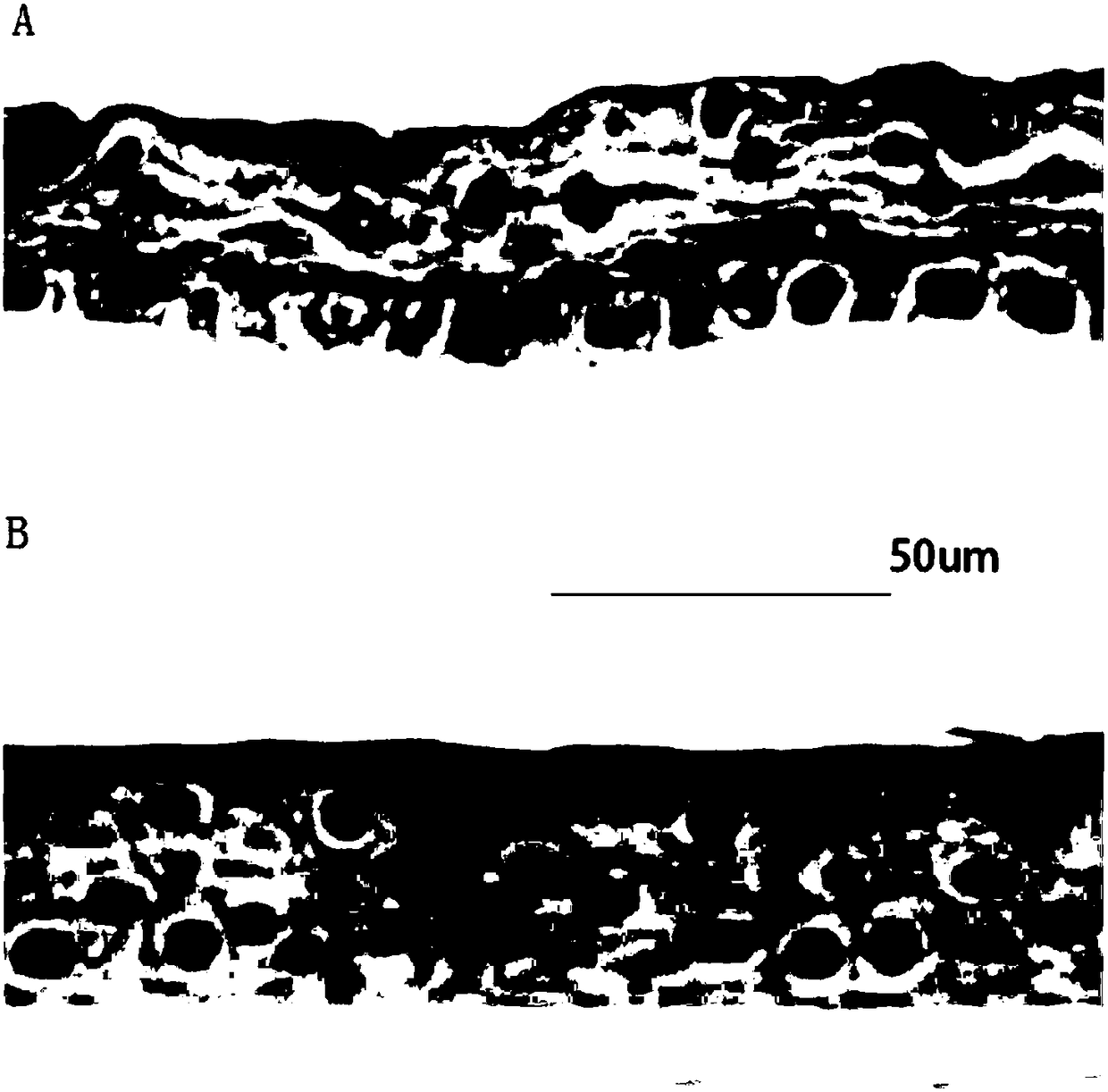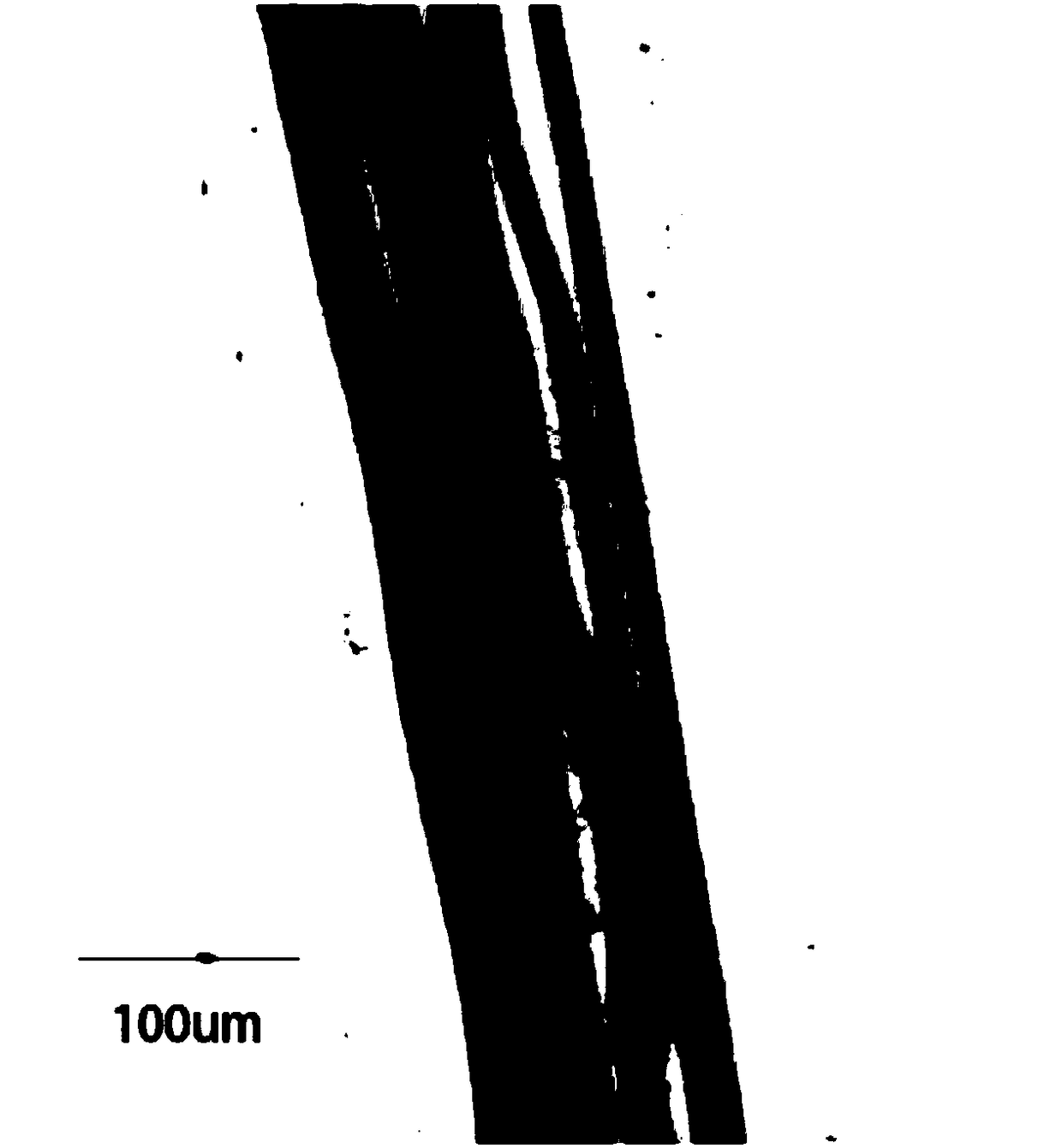Whole eye cornea bioengineering cultivation method
A technology of cornea and culture method, which is applied in the direction of biochemical equipment and methods, microorganisms, cell culture support/coating, etc., and can solve the problems of increasing infection, transfection, operation failure, etc.
- Summary
- Abstract
- Description
- Claims
- Application Information
AI Technical Summary
Problems solved by technology
Method used
Image
Examples
Embodiment 1
[0098] Corneal epidermal culture
[0099] The patient’s lidocaine was locally anesthetized, and the patient’s oral cavity was locally disinfected with povidone iodine. The patient’s oral mucosal tissue was taken from the internal buccal mucosal epithelium, about 3×3mm in size.
[0100] Treat the oral mucosal tissue with 5ml dispase II (3mg / ml, Roche) at 37℃ for about 1 hour. After removing all the epithelial layer, the oral mucosal epithelial cells are collected and placed in the digestive juice for 15 minutes to form a single cell suspension liquid.
[0101] The separated cells are put into a collagen medium, the surface of the medium is amniotic membrane, and the amniotic membrane is coated with N-isopropyl polymer.
[0102] At the same time, T3T feeder cells and mitomycin C are placed in the periphery to secrete growth hormone and cytokines.
[0103] After culturing at 37°C for about 2 weeks, an active 3-5 layer of epidermal cells can be obtained by the naked eye. After hematoxylin-...
Embodiment 2
[0106] Corneal stroma culture
[0107] 1. Isolation of autologous skin fibroblasts
[0108] Under aseptic conditions, remove the 3×2mm size of the skin tissue of the inner thigh of the lower limbs and place it in phosphate buffered saline (PBS) containing 100U / ml penicillin and 100ug / ml streptomycin to wash 3-5 times to remove blood stains and Cut off the connective tissue.
[0109] The skin is soaked in 10ml of a mixture containing 2ml of double-antagonist (100U / ml penicillin and 100μg / ml streptomycin) and 1ml of digestive solution, kept at 4°C, and left overnight.
[0110] The next day, continue to use phosphate-buffered saline containing penicillin and streptomycin (double antibodies) to wash 3-5 times, and then separate the dermis and epidermis, use a new sterile scalpel to cut the dermis into small pieces. The fragments were transferred to a 50ml centrifuge tube containing 0.5ml of biantagonist and 5ml of collagenase (1mg / ml).
[0111] Incubate at 37°C for 4-8 hours, shaking appr...
Embodiment 3
[0123] Culture of corneal endothelial cells
[0124] The culture seed cells of corneal endothelial cells are obtained from the corneas of other donors (the younger the better), and they are used within 10 days after donation.
[0125] The cornea is washed 2-5 times in phosphate-buffered saline containing 100U / ml penicillin and 100μg / ml streptomycin, 10-18min each time, after removing blood stains, carefully peel off the elastic membrane with the help of a vacuum suction device (Descemet membrane) and endothelial layer, the elastic membrane and endothelial layer after peeling will automatically roll up along the endothelial layer.
[0126] The collected posterior elastic membrane and endothelial layer were treated with collagenase (1mg / ml). After 2 hours, the corneal endothelial layer was partially separated. The complete separation of corneal endothelial cells requires collagenase treatment for approximately 6 hours (the time varies greatly depending on the donor), and the endotheli...
PUM
 Login to View More
Login to View More Abstract
Description
Claims
Application Information
 Login to View More
Login to View More - R&D
- Intellectual Property
- Life Sciences
- Materials
- Tech Scout
- Unparalleled Data Quality
- Higher Quality Content
- 60% Fewer Hallucinations
Browse by: Latest US Patents, China's latest patents, Technical Efficacy Thesaurus, Application Domain, Technology Topic, Popular Technical Reports.
© 2025 PatSnap. All rights reserved.Legal|Privacy policy|Modern Slavery Act Transparency Statement|Sitemap|About US| Contact US: help@patsnap.com



